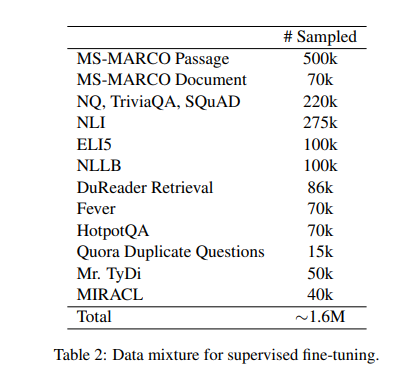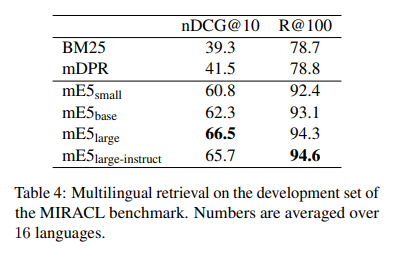The main challenge in text embedding in natural language processing (NLP) lies in developing models that can work equally well in different languages. Traditional models often focus on English, which limits their effectiveness in multilingual contexts. This gap highlights the need to incorporate models trained on diverse linguistic data capable of understanding and interpreting multiple languages without losing accuracy or performance. Addressing this issue would significantly improve the model's usefulness in global applications, from machine translation services to multilingual information retrieval systems.
The development of text embeddings relies heavily on monolingual data sets, predominantly in English, which limits its applicability. While effective for English texts, these methods often need to be revised when applied to other languages. The approach typically involves training models on large data sets to capture linguistic nuances without considering the multilingual spectrum. As a result, there is an obvious performance disparity when these models are tasked with processing languages other than English, underscoring the need for more inclusive and diverse training methodologies.

A research team at Microsoft Corporation has introduced the mE5-{small/base/large} multilingual E5 text embedding models, designed to address the challenges mentioned above. These models are trained using a methodology that incorporates many languages, ensuring better performance in different linguistic contexts. By adopting a two-stage training process that includes contrastive pre-training on pairs of multilingual texts followed by supervised fine-tuning, the models aim to balance inference efficiency and embedding quality, making them highly versatile. for various multilingual applications.
The multilingual E5 text embedding models are initialized from the MiniLM, xlm-robertabase, and xlm-roberta-large multilingual models. Contrastive pre-training is performed on 1 billion pairs of multilingual texts, followed by fine-tuning on a combination of labeled data sets. The mE5-large-instruct model is fitted on a new data combination that includes synthetic data from GPT-4. This method ensures that models are fluent in English and show high performance in other languages. The training process is designed to closely align the models with the linguistic properties of the target languages, using both supervised and weakly supervised techniques. This approach improves the multilingual capabilities of the models and ensures that they are adaptable to specific linguistic tasks, providing a significant advance in text embedding technologies.


The models are evaluated on several data sets, including nDCG10, R100, MrTyDi, and DuReader. Upon evaluation, the multilingual E5 models demonstrated exceptional performance across multiple languages and benchmarks, including the MIRACL multilingual retrieval benchmark and Bitext mining in over 100 languages. The mE5 large instruction model outperforms LaBSE, designed specifically for bitext mining, due to the expanded language coverage offered by the synthetic data. The research validates the effectiveness of the proposed training methodology and the important benefits of incorporating diverse linguistic data, showing the models' ability to set new standards in multilingual text embedding.
The development of multilingual E5 text embedding models is a valuable advancement in NLP. By effectively addressing the limitations of previous models and introducing a robust methodology for training on diverse linguistic data, the research team has paved the way for more inclusive and efficient multilingual applications. These models improve performance on language-related tasks in different languages and significantly break down language barriers in digital communication, heralding a new era of global accessibility in information technology.
Review the Paper and GitHub. All credit for this research goes to the researchers of this project. Also, don't forget to follow us on Twitter and Google news. Join our 37k+ ML SubReddit, 41k+ Facebook community, Discord channeland LinkedIn Grabove.
If you like our work, you will love our Newsletter..
Don't forget to join our Telegram channel
![]()
Nikhil is an internal consultant at Marktechpost. He is pursuing an integrated double degree in Materials at the Indian Institute of technology Kharagpur. Nikhil is an ai/ML enthusiast who is always researching applications in fields like biomaterials and biomedical science. With a strong background in materials science, he is exploring new advances and creating opportunities to contribute.
<!– ai CONTENT END 2 –>






